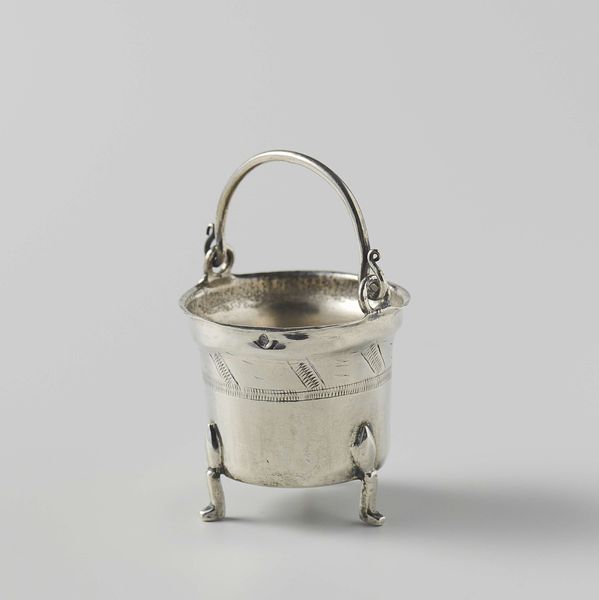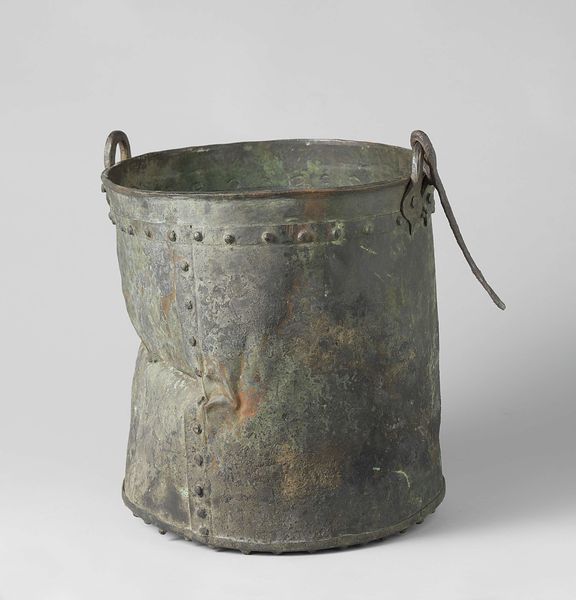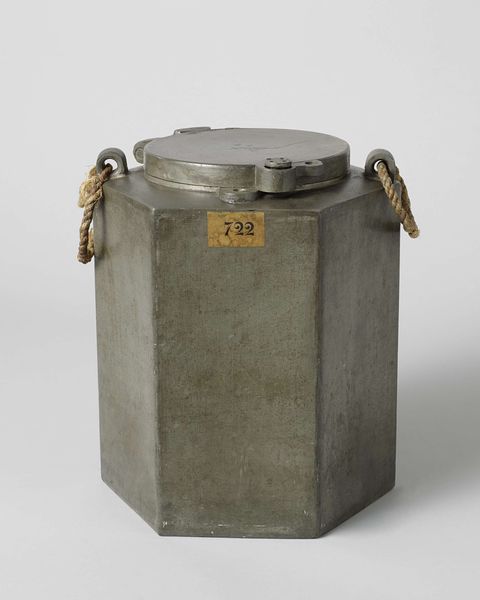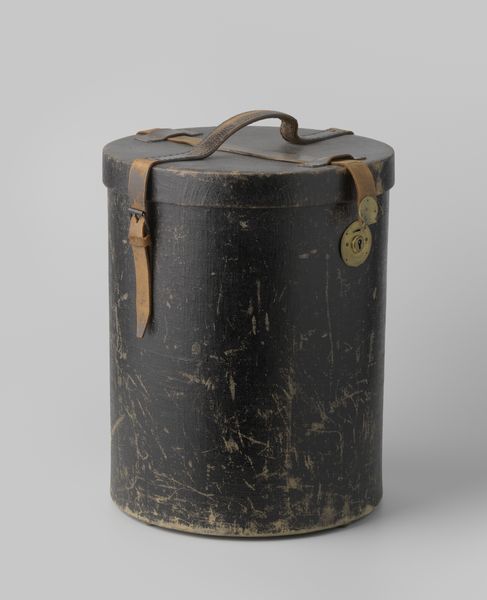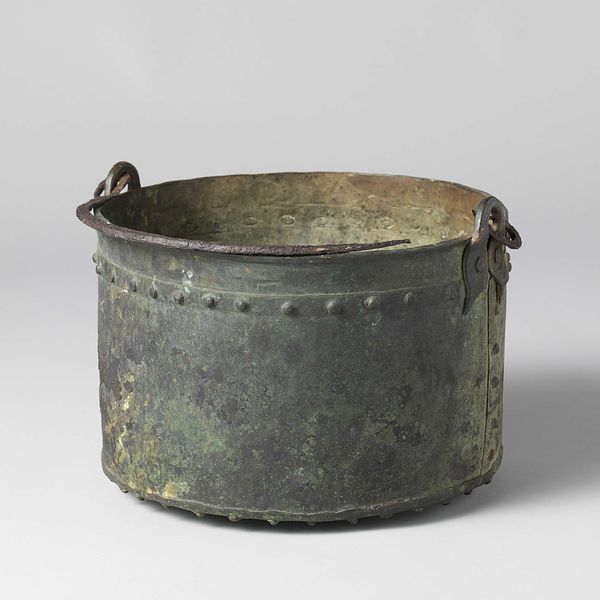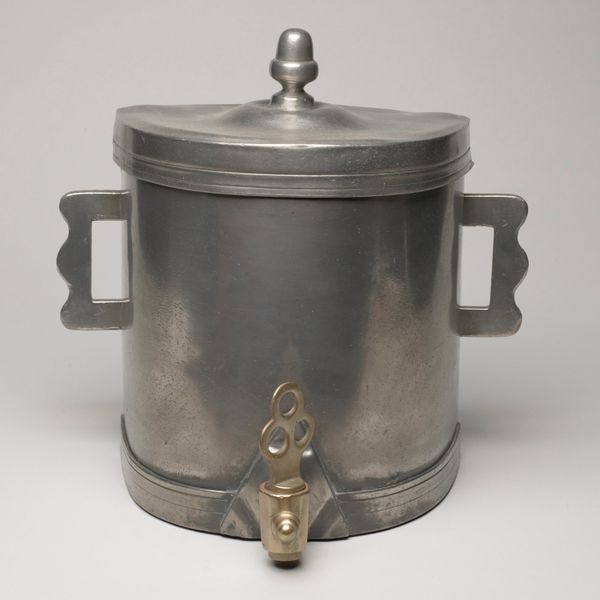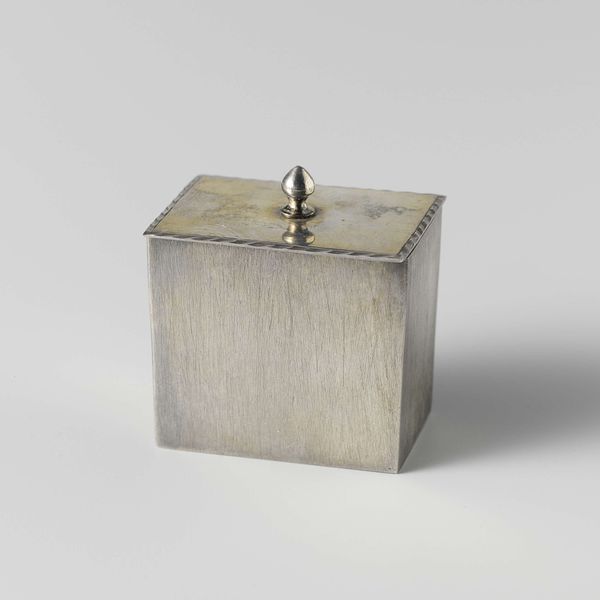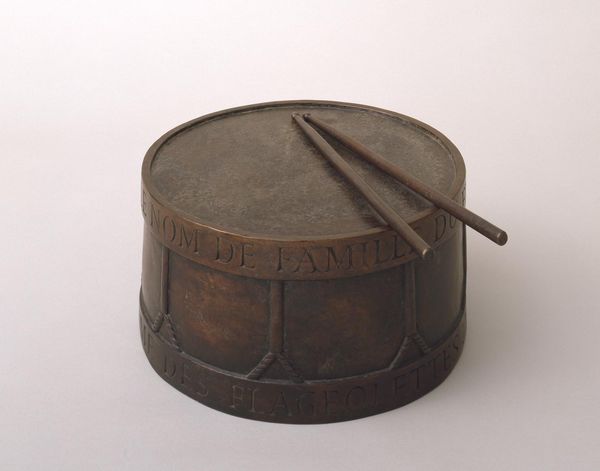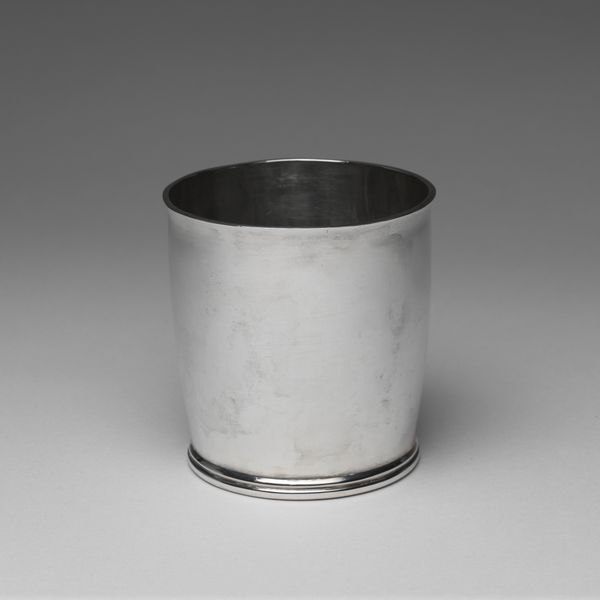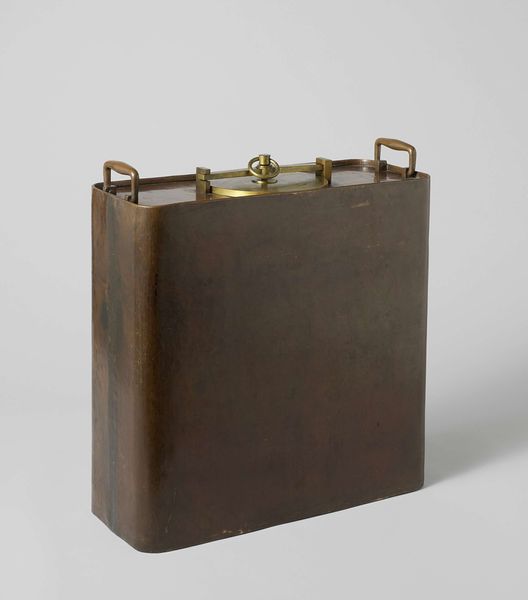
Eetketel gedragen door J. Boelen Jkzn., in 1830/32 Vrijwillige Flankeur, later korporaal Holl. Schutterij, 1e Afd. 1e Bat. c. 1800 - 1830
0:00
0:00
metal, photography
#
metal
#
photography
Dimensions: height 20.5 cm, height 11.3 cm, width 20.5 cm, depth 10.5 cm, depth 17.5 cm
Copyright: Rijks Museum: Open Domain
This is a food container, carried by J. Boelen Jkzn, a volunteer and corporal in the Dutch militia in 1830. Food, of course, is the source of sustenance, and the act of carrying it—a highly potent symbol of care and nourishment. Consider the chain that secures it: a motif found across time, from ancient reliquaries to modern handbags. Chains can symbolize connection, but also constraint. This one seems to perform a protective function, ensuring access to vital sustenance. It also reminds us of our shared human needs. Across cultures and centuries, we see this duality: the vessel, promising plenty, secured by the chain. Think of Pandora's box, or even the chained dog guarding a home— protection, desire, and the ever-present shadow of what might be lost. This simple container, then, is not just a vessel for food, but a potent symbol. It holds within it layers of meaning, connecting us to primal instincts, historical echoes, and the universal desire for security and fulfillment.
Comments
No comments
Be the first to comment and join the conversation on the ultimate creative platform.
